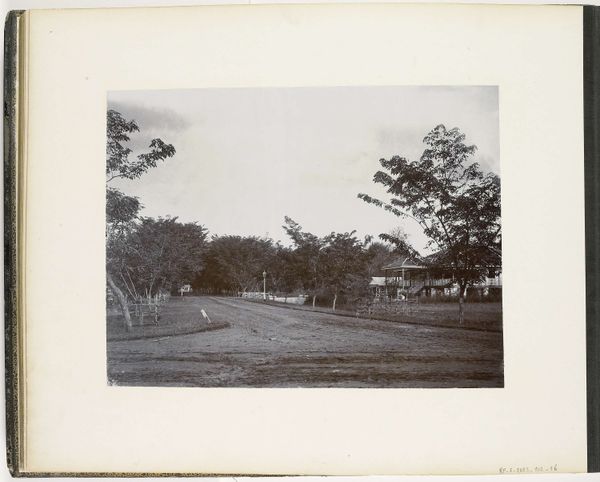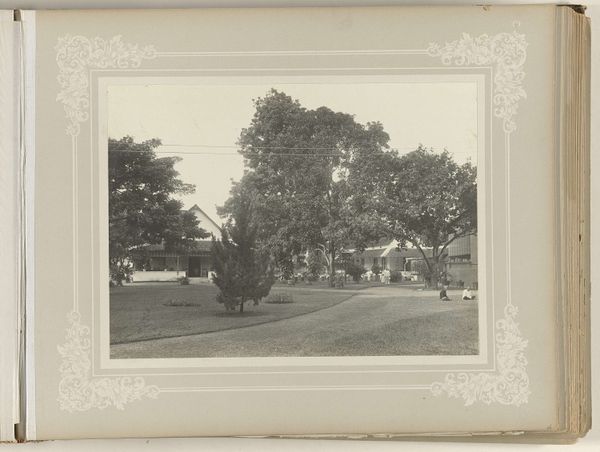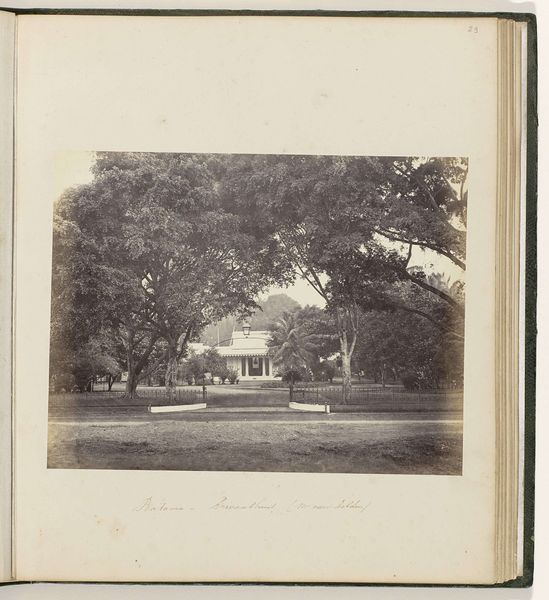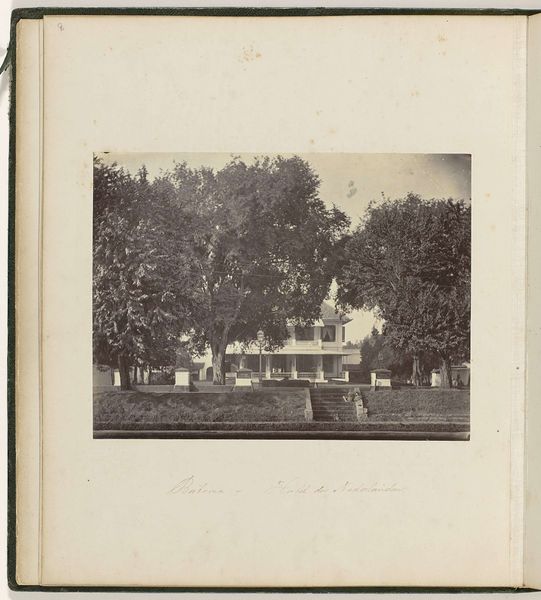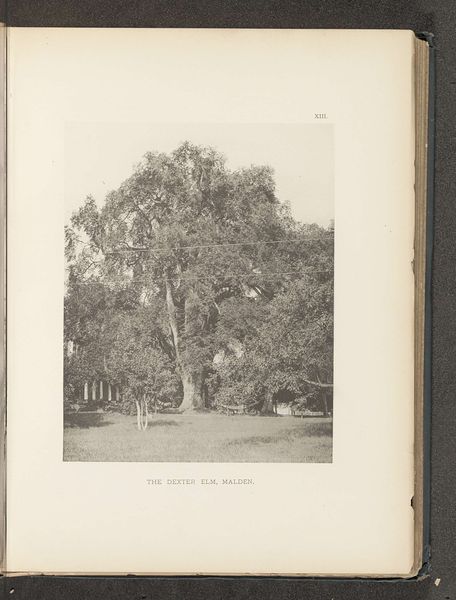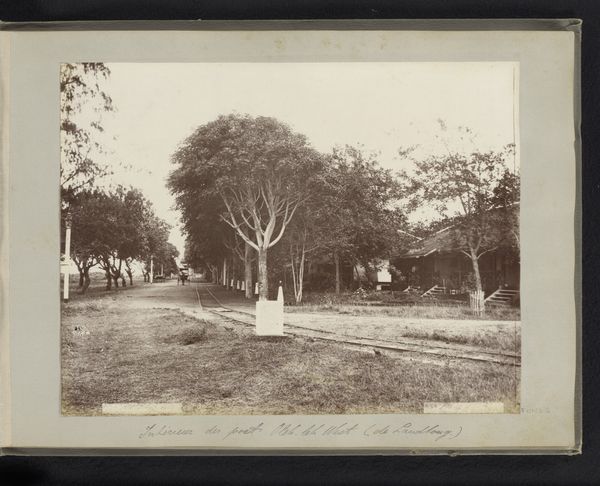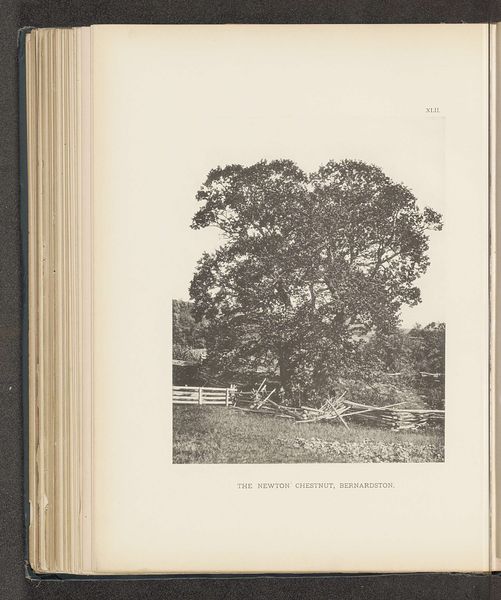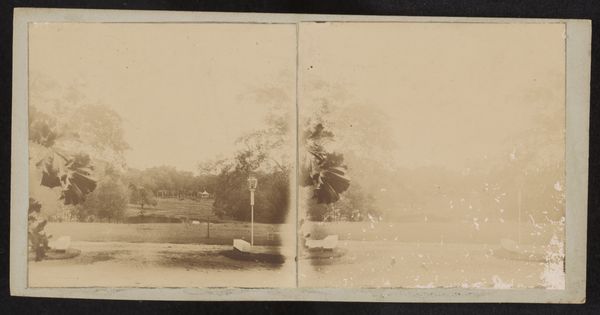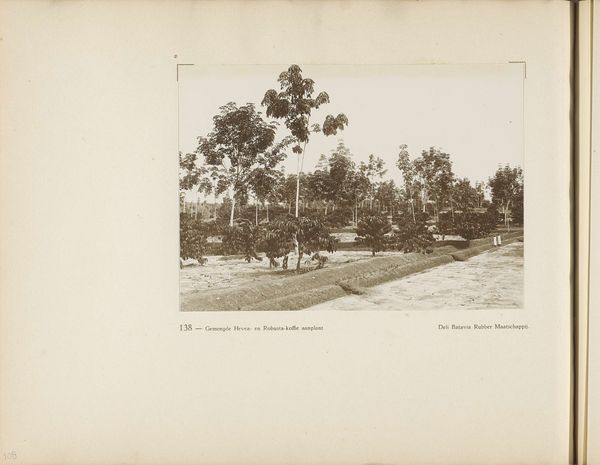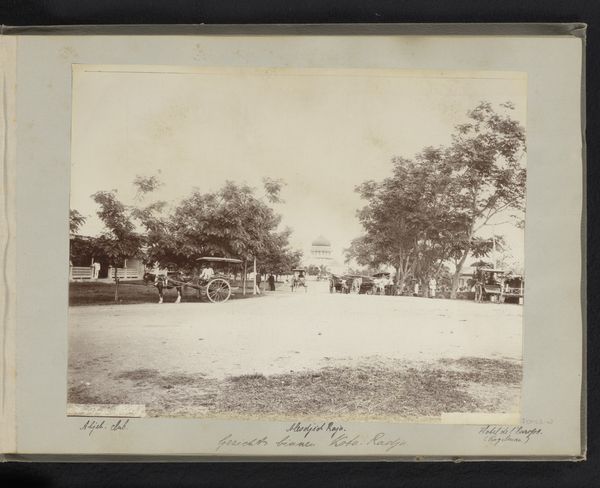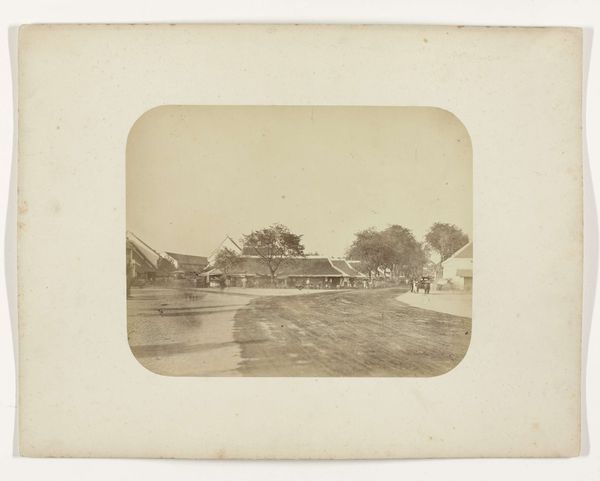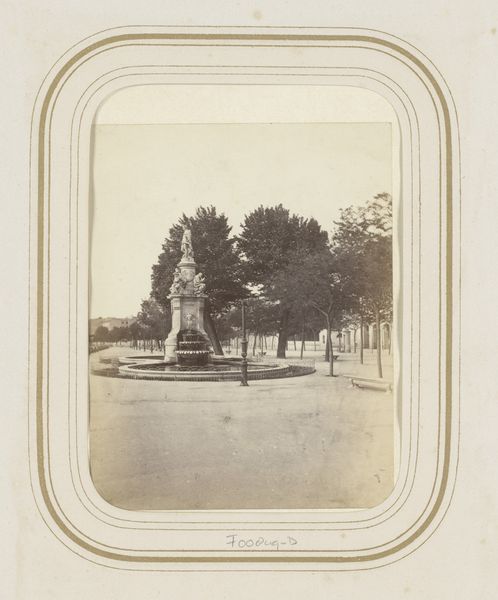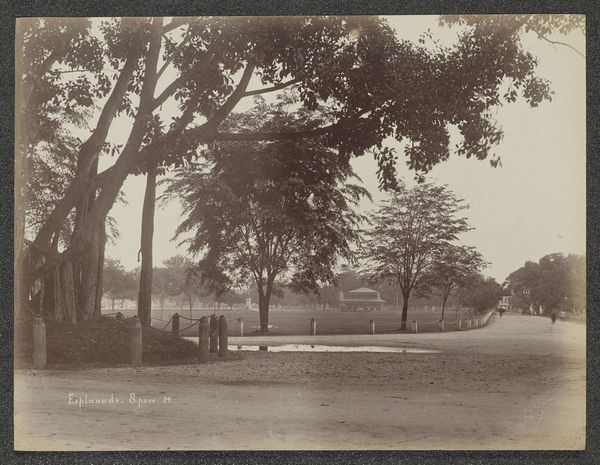
photography, albumen-print
#
landscape
#
photography
#
orientalism
#
cityscape
#
albumen-print
Dimensions: height 184 mm, width 245 mm
Copyright: Rijks Museum: Open Domain
Curator: There's something undeniably still and serene about this image. Editor: It's an albumen print from sometime between 1863 and 1866, titled "Koningsplein Batavia (Huis van Mr. Cramerus)," now held at the Rijksmuseum. The photographers are listed as Woodbury & Page. I am struck by its colonial gaze in Batavia. Curator: Exactly, a stillness bordering on melancholy. The vast lawn and that lone, prominent tree with its bleached white branches against the low-lying building in the background. There is the symbol of mortality present in the whiteness, something spectral even in this mundane depiction of the Cramerus house. Editor: Mundane? I see a carefully constructed statement about Dutch presence in the East Indies. This composition – the vastness implying ownership, control – isn’t casual. That large lawn you mentioned is not just empty space; it is cleared space, manicured space, and space claiming domain. Curator: True. Yet that bare tree troubles that easy reading. In this medium, this form, trees generally symbolise nature, a counterpoint to the geometry of the house and colonial authority. In fact the bare, twisting branches speak to a disruption of the perceived idyllic balance between colonizer and colonized. What we think is a plain document becomes loaded, complicated. Editor: Perhaps that’s a projection? I see that bareness simply as a product of photographic limitations. Capturing greenery realistically at that time wasn't so simple, so maybe they decided to remove it from the shot altogether. Curator: Well, even so, it introduces an element of ambiguity. Consider what “Koningsplein” itself—King’s Square—signifies in a place like Batavia. A statement of power, but one forever entwined with the environment, its people, which even then was in transformation. Editor: This image really speaks to the intersection of representation, power, and the ever-present selective nature of the photographic eye during that time period. Curator: Indeed. And that selection can reveal even more than was initially intended.
Comments
No comments
Be the first to comment and join the conversation on the ultimate creative platform.
